Water heater for fresh air: types, device, model overview
To solve the problems of air exchange in private homes and industrial buildings, along with fans, appliances are used that heat or cool the air that comes from the street. This helps to improve indoor microclimate characteristics and increase comfort level.
One of the economical and affordable devices is a water heater for fresh air ventilation, more familiar to residents of the northern regions. From our material you will learn about the operating principles and design features of this type of equipment. We will also talk in detail about several popular models of air heaters for ventilation.
The content of the article:
Types of water heaters for ventilation
Just note that the devices used to heat the air in ventilation and air heating systems can work not only on water.
Four types of heaters are distinguished, differing in the way of heating the coolant:
- fire;
- water;
- steam;
- electric.
Water jets are the most popular due to the budget cost and minimal maintenance costs. The only difficulty concerns installation, in which it is necessary to bring water pipes.
For this reason, it is impossible to install the device in urban apartments, but in large buildings (for example, in storage rooms, garages, catering establishments), a system with the correct air heater strapping is quite effective.
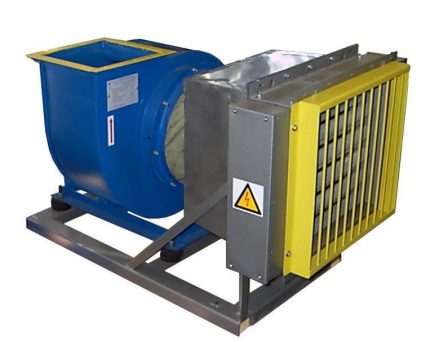
A distinctive feature of steam appliances is the high speed at which they reach the required temperature. They are relevant for industrial enterprises, where it is easy to install and maintain steam pipelines; for private housing, their use is impractical.
If you need quick installation, not complicated by the connection of communications, use models of electric heaters for supply ventilation. A protected power supply point is sufficient for their operation. There is no coolant as such at all, TENY serve as heating elements. Like any electrical appliances, they are disadvantageous from a material point of view.
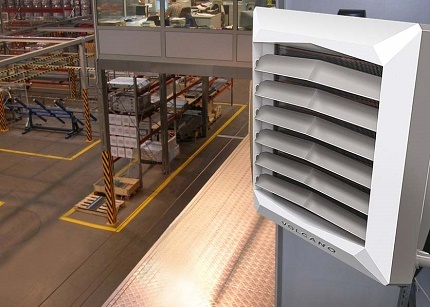
Principle of work and design features
Universal devices running on water are installed in places with a well-established heat supply system. A simple but quite effective design solution allows you to heat the air in the range from + 70 ° С to + 100 ° С and is relevant for hangars, gyms, supermarkets, greenhouses, warehouses, large pavilions - that is, voluminous rooms that require additional heating.
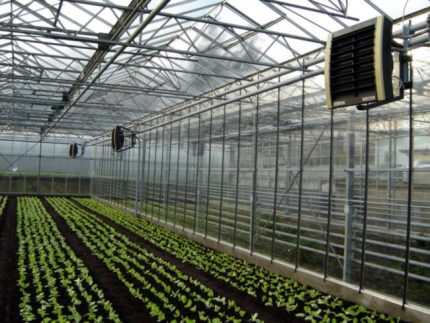
If you have ever used a household heat heater, you will easily understand the principle of operation of a water device. It also heats the air, but the role of an electric spiral enclosed in a small casing is played by a set of metal tubes through which the heated coolant circulates.
The heating process is as follows:
- hot water heated to the desired temperature (on average from + 80 ° С to + 180 ° С) is supplied from heating pipes to a heat exchanger consisting of small aluminum, steel, bimetallic or copper pipes;
- the tubes heat the air passing through the device;
- the built-in fan distributes the heated air around the room and stimulates its movement in the opposite direction - to the device.
Water does not have to be specially heated, since it is part of the heating system, therefore, significant cost savings are achieved.

The scheme of a standard water heater is a hybrid of a heat exchanger, fan and convector. It is effective for heating large industrial premises, and when choosing the right harness - for cottages with a well-established ventilation system.
Pros and Cons of Using
If the company has its own heat supply system, the use of air heaters for the supply ventilation of industrial premises It is as cost-effective as possible.
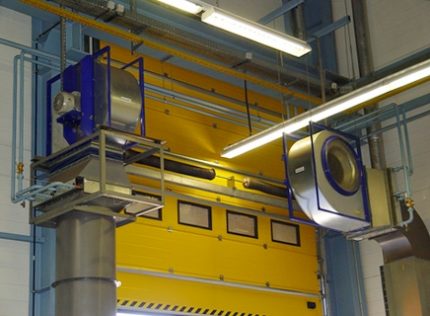
Advantages of devices connected to a centralized system:
- simple installation, no different in complexity from the installation of heating pipes;
- fast heating of a room;
- safety of all nodes;
- the ability to adjust the flow of heated air;
- strict industrial design.
But the main advantage is the lack of regular financial investments - payment occurs only when buying new equipment.
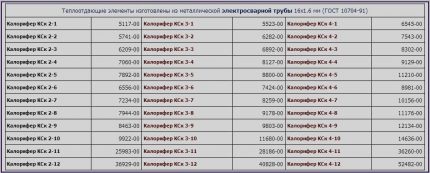
The main drawback is the inability to use water models in everyday life, especially in urban housing. An alternative is the use of electrical appliances.
Another nuance concerns negative temperatures: equipment must be installed in rooms where the minimum threshold does not fall below 0 ° C.
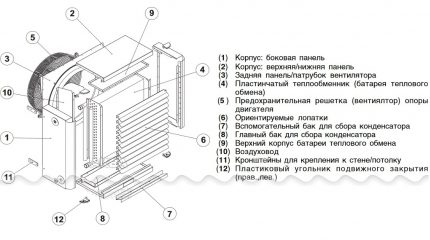
Water equipment application
The heater is an active unit of supply ventilation and has its own characteristics of installation, operation and maintenance. To figure out the connection and operation of the device will help strapping schemes and installation instructions.
Schemes of binding units
The location of the nodes depends on the installation location, air exchange pattern and equipment specifications. Several mounting options are possible, among which the most popular is mixing recirculated air with supply air.
A closed system involving only recirculation of air masses indoors is less commonly used.
More room for installation of the device arises if natural ventilation is well established. The heater can be connected to the heating system right at the air intake point, which is usually located in the basement.
In the presence of forced ventilation installation of the heating device can be carried out in any convenient place.
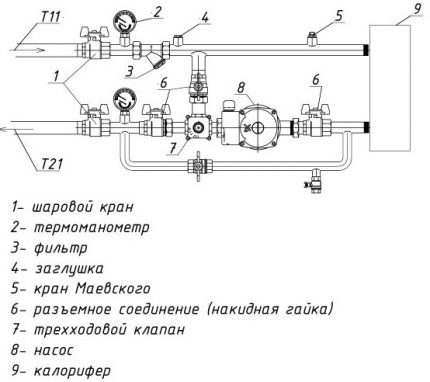
The demand for air exchange systems has led some enterprises to produce ready-made models of strapping units in various designs.
These are kits intended for assembly and include the following parts:
- balancing and check valves;
- Pumps
- bypasses, ball valves;
- two-three-way valves;
- manometers;
- purification filters.
An example of integrated production of nodes is the products of the Integration company (St. Petersburg).
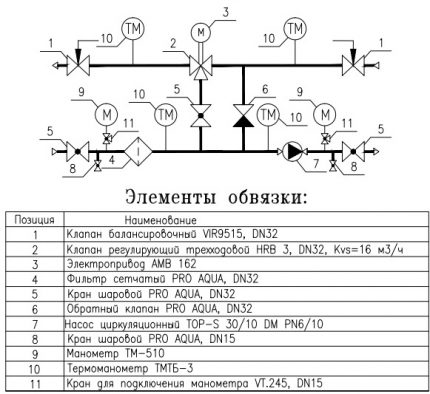
Based on the technical conditions of installation and the needs of the user, there are several common combinations of parts in assemblies.
The following diagrams show four popular designs:
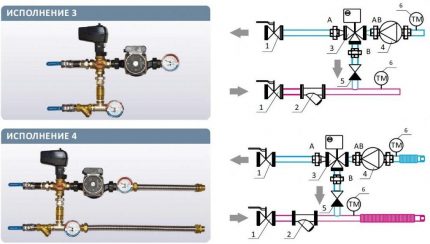
In 1 and 3 versions, the nodes are connected in a rigid way, in 2 and 4 - with the help of flexible metal hoses.
Heating adjustment
To regulate the thermal power of air-heating devices, mixing units with three way valve. Thanks to the principle of mixing, you can significantly reduce the cost of heating the room.
A three-way valve allows you to reduce the temperature of the coolant by mixing in the hot water entering the air heater, a certain amount of chilled fluid discharged from the heat exchanger.
Installation circulation pump increases system performance. It is preferable to mount it at the outlet, since chilled water (or an alternative option - glycol solution) extends the life of the device.
There are several important operating conditions for mixing equipment:
- maximum proximity to the heater;
- availability for maintenance;
- filtered coolant without chemical inclusions;
- the room temperature is above 0 ° C.
Technical characteristics of the devices may vary, but on average the recommended coolant temperature is from + 2 ° C to + 150 ° C. For regular monitoring of performance, it is recommended to install two thermomanometers near the heat exchanger.
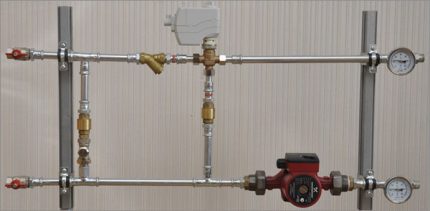
The three-way valve is adjusted using the actuator and controller. Measuring instruments allow you to most accurately set the desired temperature and change the pressure.
Features of installation and connection
A team of specialists is invited to install air heaters in production shops or other industrial facilities. Household devices can be connected independently if you carefully follow the instructions and have the skills to work with electric and heating appliances.
For those who do it yourself in the house heating systemInstalling an air heater will seem like fun for children.
Household models differ in small volumes and relatively light weight, but before hanging them on a wall (or ceiling), you should check the strength of the base. The strongest are concrete and brick walls, moderately suitable - wooden, the weakest - plasterboard.
First of all, they fix a metal frame - a bracket with holes for fixing the case. For some manufacturers, the frame is called the mounting console.

Suspend the air heater case and connect the pipes with a set of shutoff valves or a mixing unit, which can be partially installed even before the installation of the device.
Insertion into the heating system is carried out in two ways: by using connecting fittings (couplings with gaskets) or by welding metal pipes. The second method is considered the most reliable, but it is not possible with a flexible connection.
One of the weakest areas is the heat exchanger tubes, which need to ensure stability.If there is a risk of changing the position of the device, it is better to replace the rigid tubes with flexible elements. In any case, the load on the nozzles should be excluded. To insulate the system and prevent leaks, the joints are treated with sealant.
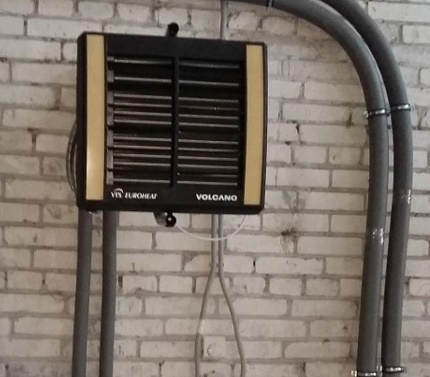
Before the testing process, it is necessary to remove air from the channels, check the operation of the valves and the guide blinds.
Rules of operation and the possibility of repair
In order for the equipment to work flawlessly and fully perform its functions, the following rules should be considered:
- monitor the composition of the air in the room (compliance requirements can be found in GOST 12.1.005-88);
- make installation strictly according to the instructions and based on the manufacturer's recommendations;
- do not increase the temperature of the coolant above + 190 ° C;
- comply with pressure standards - about 1.2 MPa;
- after cooling the room, heat smoothly, at about 30 ° C per hour;
- make sure that the air temperature does not fall below 0 ° C, otherwise the heat exchanger tubes will burst.
If the air heater is installed in a room with high humidity, the degree of dust and moisture protection should be IP66 or higher.
We do not recommend to make repairs on our own, since one breakdown most often leads to the next, and in the end you will just have to replace some parts. It is better to contact the service center and entrust the work to professionals. In addition, do not ignore before buying Calorifier power calculationotherwise there is a chance to waste money.
Short review of modern models
To make an impression of the brands and models of water heaters, consider several devices from different manufacturers.
No. 1 - KSK heaters
KSK-3 heaters manufactured at the company T.T.T.

Specifications:
- coolant temperature at the inlet (outlet) - +150 ° С (+70 ° С);
- inlet air temperature - from -20 ° С;
- working pressure - 1.2 MPa;
- maximum temperature - +190 ° C;
- service life - 11 years;
- working life - 13,200 hours
External parts are made of carbon steel, heating elements are made of aluminum.
No. 2 - Volcano fan heaters
The Volcano mini water heater is a compact device of the Polish brand Volcano, it is distinguished by practicality and ergonomic design. The airflow direction is controlled by controlled blinds.
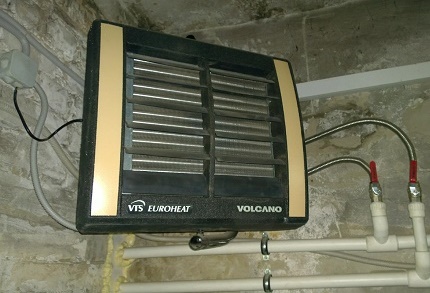
Specifications:
- power within the borders - 3-20 kW;
- maximum productivity - 2000 m³ / h;
- heat exchanger type - double row;
- protection class - IP 44;
- maximum heat carrier temperature - 120 ° С;
- maximum working pressure - 1.6 MPa;
- the internal volume of the heat exchanger is 1.12 l;
- guide blinds.
Volcano water heaters are designed for heating air in domestic and industrial premises using a water coolant.
No. 3 - Galletti AREO air heaters
Air heater Galletti AREO Italian production.
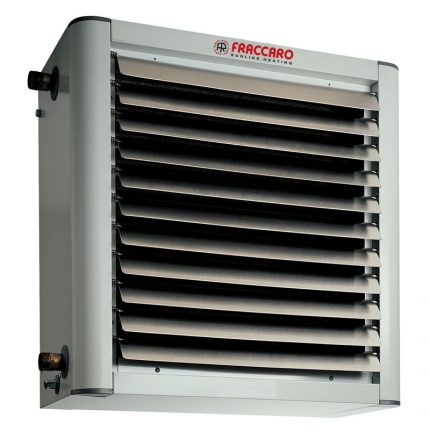
Models are equipped with a fan, a copper-aluminum heat exchanger and a drainage tray.
Specifications:
- power in heating mode - from 8 kW to 130 kW;
- power in cooling mode - from 3 kW to 40 kW;
- water temperature - + 7 ° C +95 ° C;
- air temperature - from 10 ° C to + 40 ° C;
- working pressure - 10 bar;
- number of fan speeds - 2/3;
- electrical safety class - IP 55;
- motor protection.
In addition to the devices of the listed brands, models of the following brands can be found on the market of air heaters and water heaters: Teplomash, 2VV, Fraccaro, Yahtec, Tecnoclima, Kroll, Pakole, Innovent, Remko, Zilon.
Conclusions and useful video on the topic
Overview of the Volkano brand water heater:
In detail about technical characteristics of the Ballu BHP-W-60 model:
A simple design and installation available for independent execution are the reasons why water-type heaters are chosen. The correct choice of the device and proper installation of the harness will increase the efficiency of ventilation and improve the heating system of industrial and residential premises.
Have questions about the topic of the article? Or maybe you found flaws in our material or want to supplement it with interesting information? Please write your comments in the box below.

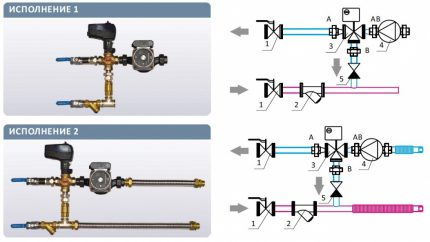
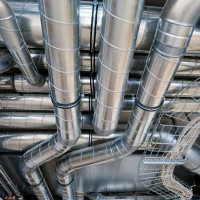 Types of ventilation pipes: a detailed comparative overview of ventilation pipes
Types of ventilation pipes: a detailed comparative overview of ventilation pipes 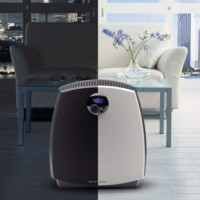 How to choose a humidifier-air purifier: types, selection tips + an overview of the best models
How to choose a humidifier-air purifier: types, selection tips + an overview of the best models 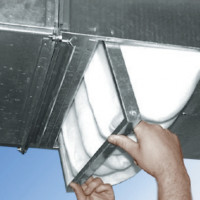 Replacing the filter in the supply ventilation: selection features + filter replacement instructions
Replacing the filter in the supply ventilation: selection features + filter replacement instructions 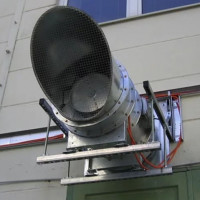 Smoke exhaust system: installation and installation of smoke ventilation
Smoke exhaust system: installation and installation of smoke ventilation  Installing a ventilation fungus on the roof: types and methods of installing a deflector on an exhaust pipe
Installing a ventilation fungus on the roof: types and methods of installing a deflector on an exhaust pipe 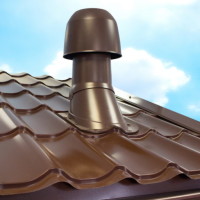 How to increase traction in ventilation: an overview of methods and devices for enhancing traction
How to increase traction in ventilation: an overview of methods and devices for enhancing traction  How much does it cost to connect gas to a private house: the price of organizing gas supply
How much does it cost to connect gas to a private house: the price of organizing gas supply  The best washing machines with dryer: model rating and customer tips
The best washing machines with dryer: model rating and customer tips  What is the color temperature of light and the nuances of choosing the temperature of the lamps to suit your needs
What is the color temperature of light and the nuances of choosing the temperature of the lamps to suit your needs  Replacement of a geyser in an apartment: replacement paperwork + basic norms and requirements
Replacement of a geyser in an apartment: replacement paperwork + basic norms and requirements
I prefer a water heater for air heating not only out of the desire to save electricity. Our old units with metal incandescent spirals dried the air and worsened all its performance, burned everything that fell on them from the atmosphere, filling the room with the smell of burning. For some time I used an oil radiator, it no longer burned oxygen, but was uneconomical and quickly consumed electricity.